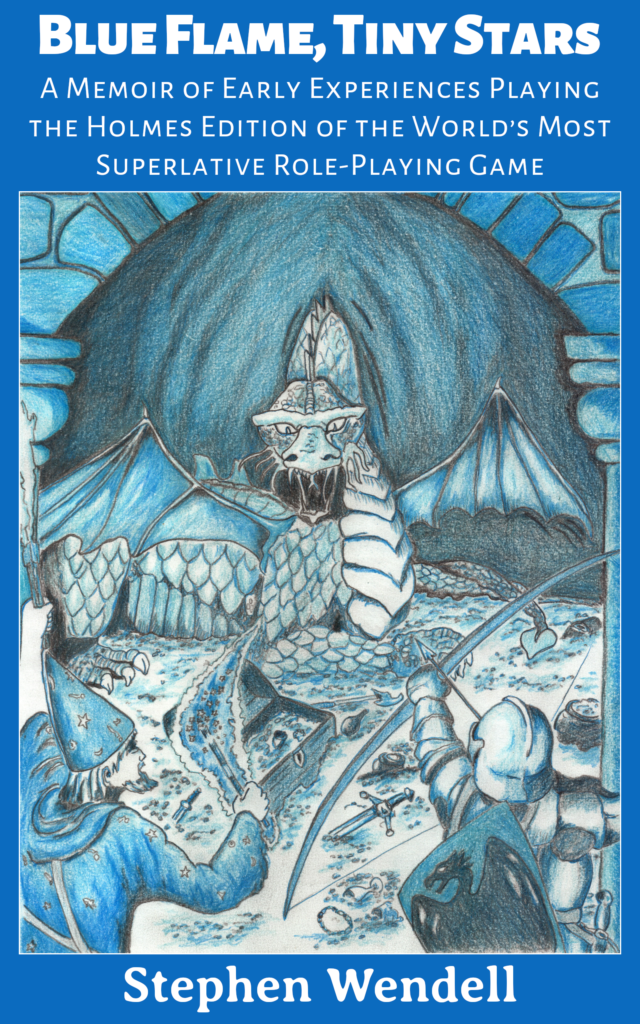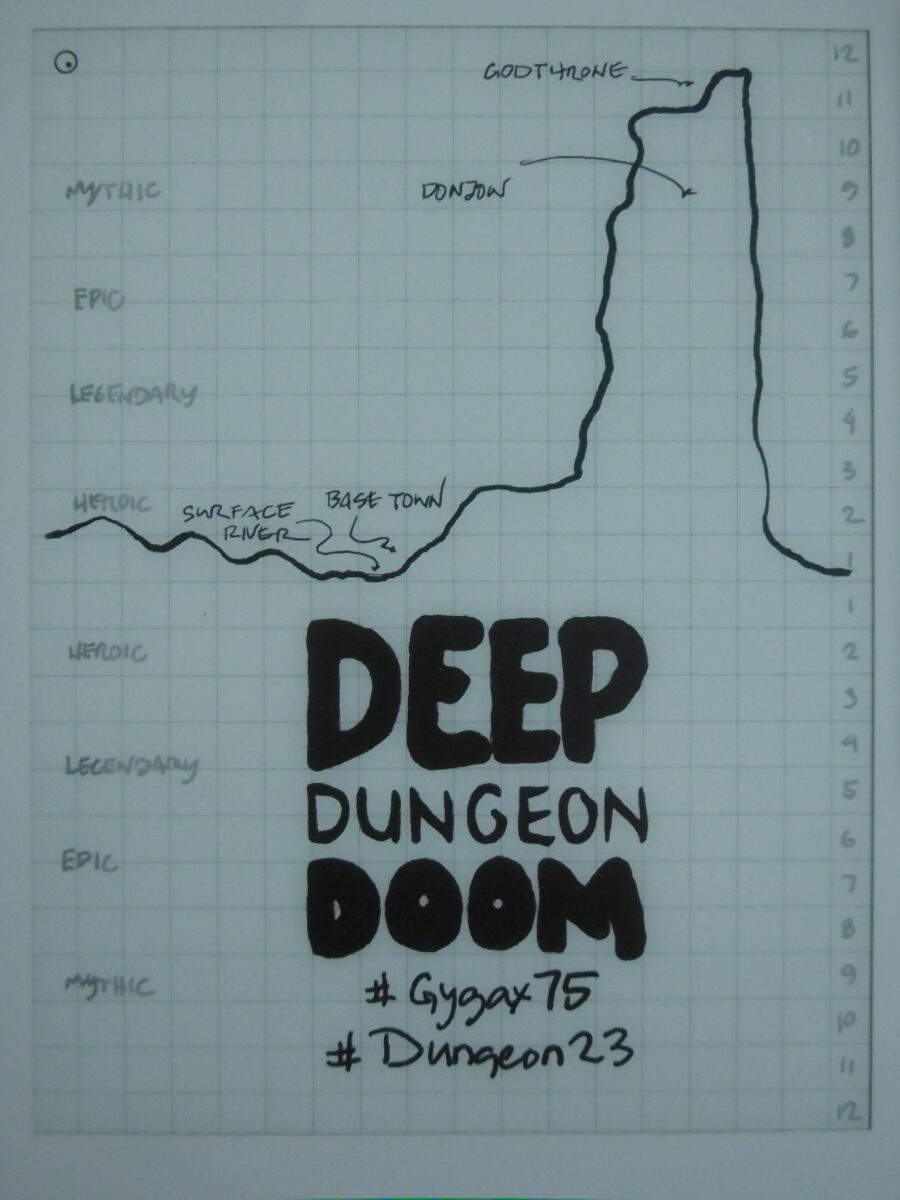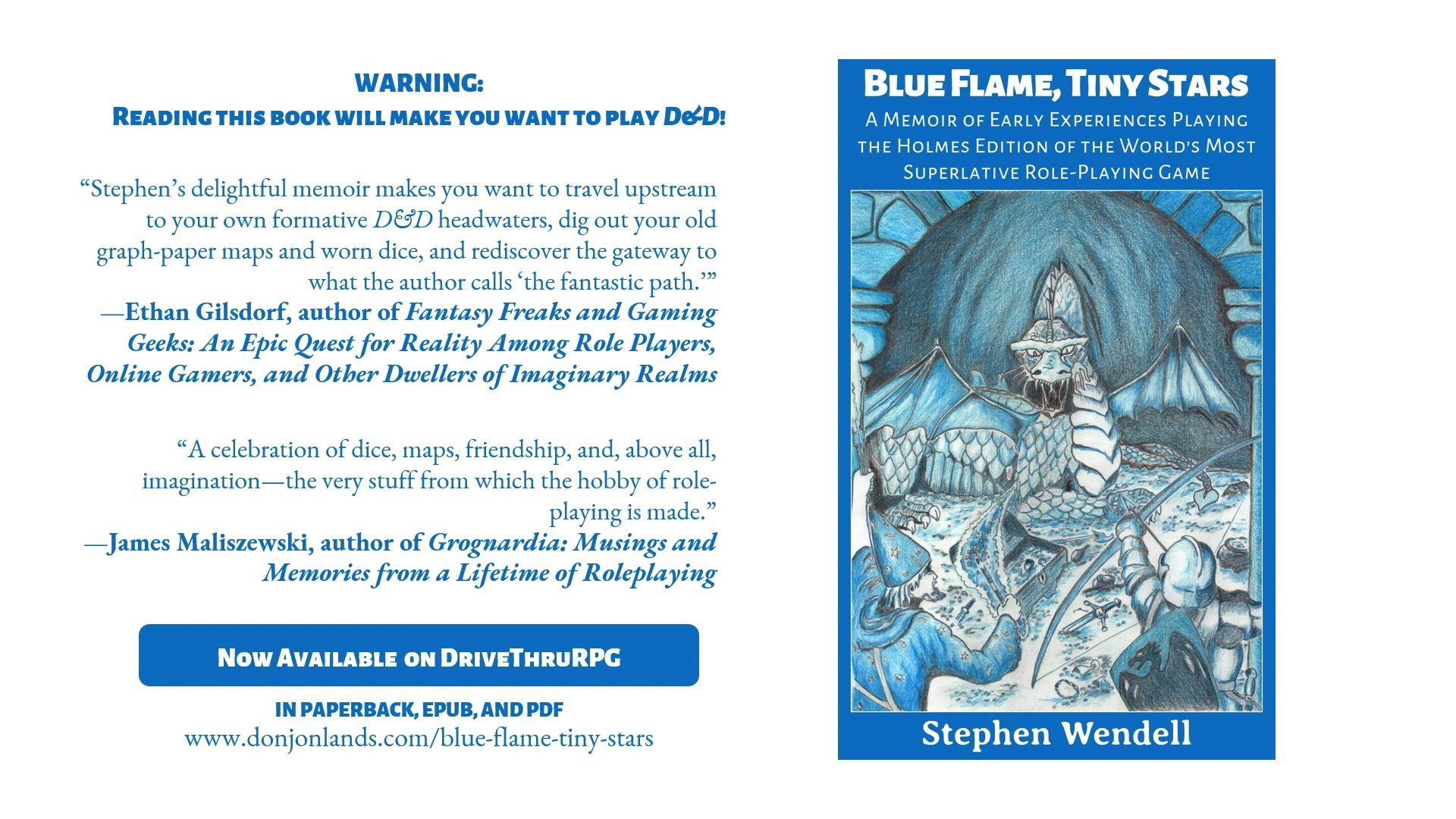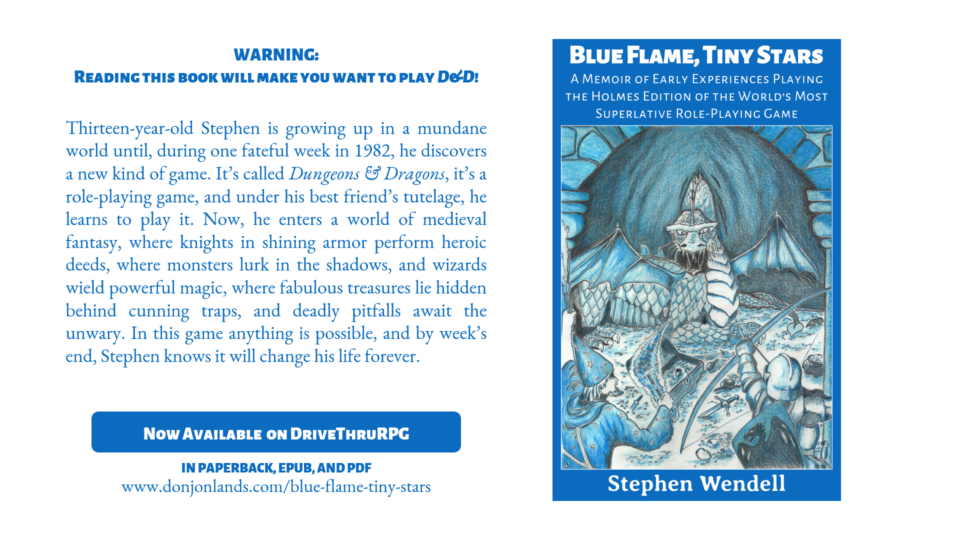Setting Up a Campaign in Original D&D
In the original 1974 DUNGEONS & DRAGONS rules booklets, Gygax and Arneson give us scant guidance on designing the surface and underworld environments in which a campaign will take place, and hardly anything at all about setting up “the campaign for which these rules are designed” (Men & Magic, 3).
The first of three thin volumes, under Preparation for the Campaign, advises:
“The referee bears the entire burden here, but if care and thought are used, the reward will more than repay him. First, the referee must draw out a minimum of half a dozen maps of the levels of his ‘underworld,’ people them with monsters of various horrid aspect, distribute treasures accordingly, and note the location of the latter two on keys, each corresponding to the appropriate level” (Men & Magic, 5).
This summary is followed by the assurance: “This operation will be more fully described in the third volume of these rules” (5).
The third volume provides some degree of satisfaction in the details. The Underworld & Wilderness Adventures opens with an illustration, showing a “Sample Cross Section of Levels,” and a half-page of text, which again points out the referee’s burden of time, the necessity to draw maps of a few dungeon levels, that eventually the dungeon should have a dozen or more levels with new levels under construction, and that, indeed, the depth and breadth of a dungeon is limited only by the world’s capacity to manufacture graph paper (3-4).
The book then provides a sample dungeon map accompanied by several examples of tricks and traps and advice on placing monsters and treasures (4-8).
We will see shortly that the DM’s burden of time is a recurring concern for Gary Gygax. Much like entering the dungeon, we are warned against it, but we do it anyway—That’s where the fun is.
Later, in The Wilderness section, the referee gets an outline of maps necessary to run surface-level adventures:
“First, he must have a ground level map of his dungeons, a map of the terrain immediately surrounding this, and finally a map of the town or village closest to the dungeons (where adventurers will be most likely to base themselves)” (14).
Following brief examples of the now-iconic Blackmoor and Greyhawk base towns and a suggestion to use the Outdoor Survival map board for “off-hand” or “general” adventures, the rules then get into conducting play in areas previously established. In all that, though, the D&D referee has little in the way of an overview of how to set up the campaign.
Europa
To the April 1975 issue of Walter Luc Haas’s Europa zine, Gary Gygax contributed an article “HOW TO SET UP YOUR DUNGEONS & DRAGONS CAMPAIGN—AND BE STUCK REFEREEING IT SEVEN DAYS PER WEEK UNTIL THE WEE HOURS OF THE MORNING!”1 (18-20) In it, the co-creator breaks the daunting task into five steps. I paraphrase the headings:
- Campaign Hook
- Environs
- Dungeon
- Base Town
- Greater World
While still cursory, the article’s three letter-sized pages give the referee a more structured process to set up a campaign.
#Gygax75
A blogger named Charlie (who goes by @Thatakinsboy on Twitter), coming upon Gygax’s Europa article in 2019, was inspired to follow the guidelines to set up a campaign. In a September 10 article on his blog Dragons Never Forget, Charlie introduces the Gygax ’75 Challenge and invites us to play along. He gives us a series of articles in which he walks the reader through the five steps over the next couple months, as he creates the Valley of the Three Forks, a post-apocalyptic fantasy campaign setting inspired by sci-fi and fantasy literature.
Meanwhile, in October, fellow blogger Ray Otus of the Viridian Scroll saw Charlie’s introduction and caught the bug to make a campaign using Gygax’s brief guidelines. He reviews the article in “The Gygax 75 Challenge.” Then he went further: Otus wrote a 40-page book, outlining Gygax’s steps in “achievable, bite-sized prompts and goals for a week-by-week program.” The Gygax 75 Challenge booklet (PDF) walks a DM through the five-step process in as many weeks.
After laying out the purpose of the book in the Introduction, Otus reminds us of the weekly deadline and addresses Gygax’s recurring concern:
“You are allowed one week, (no more, no less!) for each step. That may sound a bit overwhelming, but don’t overthink it!” (1)
Some time afterward, the hashtag #Gygax75 began appearing on social media, as twenty-first-century old-school D&D fans became likewise inspired.
Questing Beast Ben Milton touts Ray Otus’s Gygax 75 Challenge as “one of the best resources you can use [to build your own D&D campaign],” saying, “It’s a great way to give yourself some structure and to shepherd you through until the end” (“The ‘Gygax 75’ technique for building DnD campaigns,” 2:29-3:04).
#Dungeon23
More recently, Sean McCoy started work on “a cool little project.” McCoy tweeted:
“Megadungeon for 2023. 12 levels. 365 rooms. One room a day. Keep it all in a journal” (Twitter, December 5, 2022).
McCoy elaborates on the project in a December 6 post, “#Dungeon23,” on his Win Conditions Substack. “I love dungeons and megadungeon play,” he writes, “but writing a megadungeon is difficult!”
Journal
In the post, McCoy mentions using a stand-alone notebook or journal. He uses a Hobonichi Techo Weeks planner, whose layouts have seven days on one side, for each room of the week, and a graph-ruled page on the other, for the week’s map section.
Random Generators
For days when an idea is lacking, McCoy suggests, “Generators are your friend.” He points us to Courtney Campbell’s Tricks, Empty Rooms, & Basic Trap Design and “a billion d100 lists on Elfmaids & Octopi.”
Flying Dungeon Stocking Tables
Here, I add my own Flying Dungeon Stocking Tables, random content generation tables with probabilities based on guidelines in Holmes Bluebook D&D, Monster & Treasure Assortments, and Dungeon Geomorphs. Available in PDF for print and phone.
DM’s Burden of Time
McCoy also addresses the recurring concern, proposing “one room a day” to reduce the otherwise daunting project into small tasks, achievable in a few minutes.
“Once you realize you can create a dungeon of this magnitude, your whole world opens up with what you can do.”—Sean McCoy, “#Dungeon23,” Win Conditions
A game designer with several RPG product credits to his name, including the wildly successful Mothership RPG, McCoy further encourages the dungeon-maker. In the same words as Ray Otus, he admonishes, “Don’t overthink it.” He continues: “Don’t make a grand plan, just sit down each day and focus on writing a good dungeon room.”
Later, he adds further advice: “The goal is the finish line. Just get to the finish line,” and “Once you realize you can create a dungeon of this magnitude, your whole world opens up with what you can do.”
Inspiration Inspires
There are also hashtags now for #City23, #Hex23, and #Facility23. Maybe you have another idea…?
Now It’s Our Turn
Ray Otus closes his Introduction to The Gygax ’75 Challenge with more good advice: “Just get started.”
Starting now and throughout 2023, I am combining #Gygax75 and #Dungeon23 into a project named for the resulting old-school D&D campaign: Deep Dungeon Doom.
1 Gygax’s is a title upon which no pundit can resist comment. Mine is reserved for this footnote.




